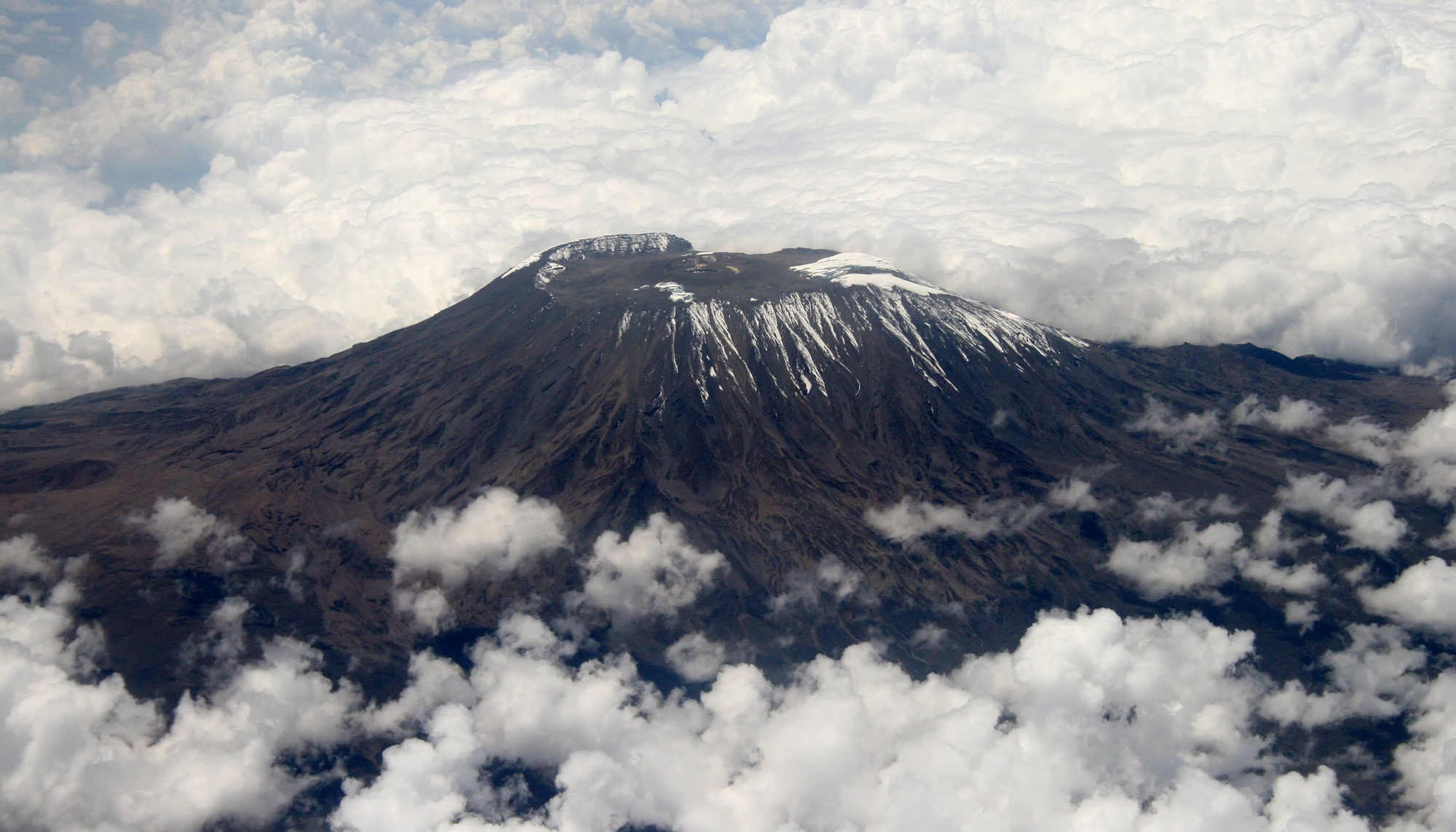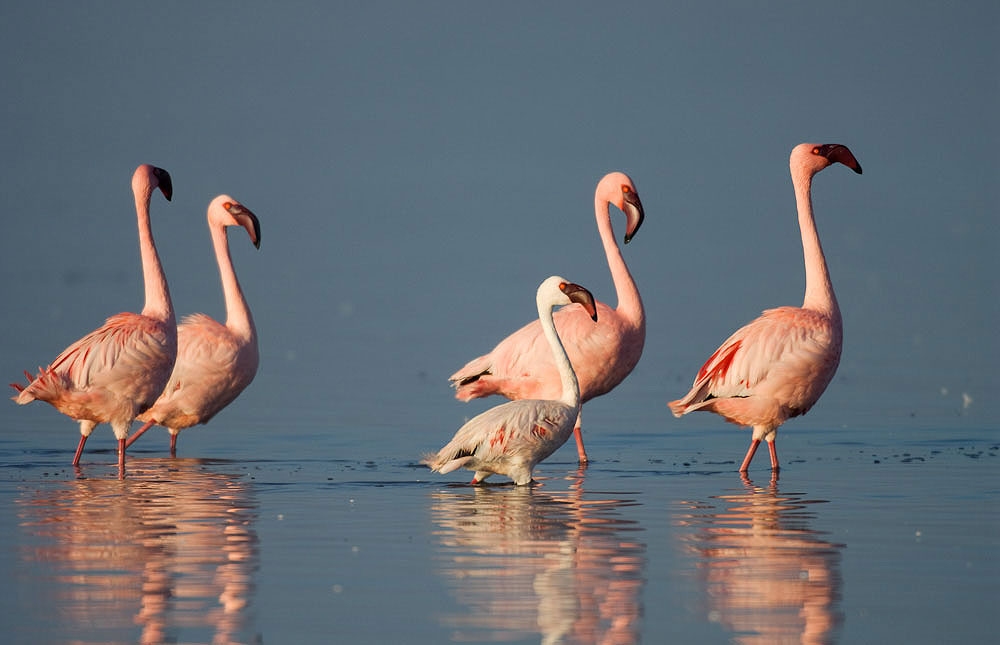How to avoid altitude sickness?

Altitude sickness, also called Acute Mountain Sickness (AMS), hypobaropathy and soroche, is an illness caused by exposure to the low air pressure, especially low partial pressure of oxygen, which many climbers experience at high altitudes.
AMS is caused by exerting yourself at high altitudes, especially if you have not been properly acclimatised. It is most common at altitudes above 2400 metres. Kilimanjaro’s peak is nearly 6000 metres above sea level. At this height, the air pressure (and the amount of oxygen it contains) is less than half that at sea level, and has been said to be comparable to ‘working with only one lung’.
AMS can be serious, especially as it can be debilitating, and it generally occurs far from places where medical treatment can be easily administered.
Not everyone suffers from AMS, of course, and it is very difficult to predict who is or is not vulnerable to it. Generally speaking, a fit person is less vulnerable than an unfit person, because their cardiovascular system can operate at low pressures longer without as much strain. Even so, anyone can be vulnerable at altitudes above 3500 metres, no matter their fitness level, if they have not spent some time getting used to the low atmospheric pressures first.
Undoubtedly the best way to see how you are going to react to high altitude is to go high and try to do some exercises. For most of us that isn't an option so a good alternative is to have a session with a specialist altitude training company that have equipment that simulates the effects of altitude. In the UK the leading specialist is The Altitude Centre.
Avoiding AMS
1. Walk high, sleep low. It is best to gradually climb higher each day, then descend lower to sleep. This lets you gradually become accustomed to lower pressures, and then recover somewhat overnight.
2. Slow and steady. You need to keep your respiration rate low enough to maintain a normal conversation. If you are panting or breathing hard, you must slow down. Overworking your heart and lungs substantially increases your chance of becoming ill.
3. Drink much more water than you think you need. Proper hydration helps acclimatisation dramatically. You need to drink at least three litres each day. As dehydration presents many of the same symptoms as altitude sickness, your chances of being allowed to continue are best if you stay hydrated.
4. Diamox. The general consensus of the research is that Diamox is helpful in avoiding AMS. We use it when climbing Kilimanjaro. We recommend you google Diamox and its effects yourself. It is a prescription drug, and you should consult with your doctor before taking it.
Effects of exposure to low atmospheric pressure
1. Low oxygen saturation
At high altitudes and low pressures, each breath takes in less oxygen, and transfers less to the blood. Blood with low levels of oxygen is said to be poorly saturated. Having slightly low oxygen saturation can lead to fatigue and feeling breathless. Severe low oxygen saturation can cause impaired mental functions, reduce your decision making ability, and have other dangerous effects. All our guides have pulse-oxymeters to check your oxygen saturation daily.
2. Cerebral oedema
Severely reduced air pressure can cause fluid to collect in the sinuses and air cavities in the skull. Initially it presents as a mild headache, but can eventually cause disorientation, coma and even death. Cerebral oedema can present very suddenly, and is an extremely serious medical issue.
3. Pulmonary oedema
This is caused by reduced air pressure in the lungs. Fluid sometimes begins to seep from the lung tissues into the air spaces of the lungs, making breathing even more difficult. This often presents like pneumonia, and is most likely to occur during sleep.
How to recognise AMS
AMS does not present as a slow, gradual worsening of lesser altitude-related symptoms like breathlessness or headache. It is in fact generally a rapid, dramatic onset of symptoms that can render a person unable to walk or take care of themselves at all.
Our guides are trained to recognise AMS and apply the appropriate first aid. They will monitor your blood oxygen saturation and evaluate your overall acclimatisation, but it is vital that you monitor and report your condition accurately, for everyone’s safety.
Our client descent protocol
If our guides believe you may be in poor health or that allowing you to continue the climb may be dangerous, they will require you to begin your descent immediately. If that decision is made, it will be according to this protocol:
1) Measuring your oxygen saturation
If it is below 80%, then you will be required to submit to another test every half hour, for the next two hours. If your saturation does not rise to at least 75%, you will be required to descend immediately. If your saturation is at least 75%, you will be allowed to continue subject to close monitoring. If your condition worsens you must notify your guide immediately, and begin the descent.
2) Evaluation on the Lake Louise Scale
If your score is between 6 and 8 then the guide will consider whether you can continue based on your score, oxygen saturation levels, pulse rate and overall well-being. If you are allowed to continue, you will be monitored closely for the duration of the ascent. If your condition worsens you must notify your guide immediately, and begin the descent. If your Lake Louise Score is higher than 8, you must descend immediately.

